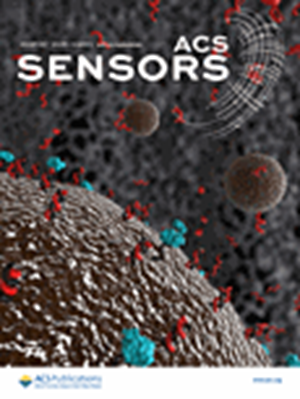Highly Sensitive, Specific, and Fast Fluorescent Sensing of Amphetamine via Structural Regulation
IF 8.2
1区 化学
Q1 CHEMISTRY, ANALYTICAL
引用次数: 0
Abstract
How to modulate the molecular structure to finely manipulate the sensing performance is of great significance for propelling the oriented design of the optical sensing probe. Here, by taking the optical detection toward amphetamine (AMP) as a model, a structural regulation strategy for the D-π-A probe was proposed to manipulate the reaction activity and optical response. The optimal probe was screened out from a series of D-π-A molecules with an electrophilic site owing to its faster response and more remarkable emission shift, as well as the desirable specificity. In particular, it was found that the probe reactivity induced two trade-off effects. First, it is kinetically expressed by the reaction time that greatly affects the sensitivity (emission shift), and second, it thermodynamically determines the specificity. Upon fine modulation, the optimal probe in the solid state integrated in a portable sensing chip was demonstrated with fast and visualized analysis for AMP in complicated scenarios. Overall, the proposed structure–performance correlation and the mediation on the trade-off effect would provide an in-depth insight for the oriented design of an optical sensor with a desirable sensing performance.

安非他明结构调控的高灵敏度、特异性和快速荧光检测
如何通过调节分子结构来精细地操纵传感性能,对于推进光学传感探针的定向设计具有重要意义。本文以安非他明(AMP)的光学检测为模型,提出了一种结构调控策略来调控D-π-A探针的反应活性和光学响应。从一系列具有亲电位点的D-π-A分子中筛选出最优探针,其响应速度更快,发射位移更显著,并且具有理想的特异性。特别是,发现探针的反应性引起了两种权衡效应。一是动力学上表现为对灵敏度影响较大的反应时间(发射位移),二是热力学上决定了特异性。通过精细调制,将最佳的固态探针集成到便携式传感芯片中,并对复杂场景下的AMP进行快速可视化分析。综上所述,本文提出的结构-性能相关性及其对权衡效应的中介作用将为定向设计具有理想传感性能的光学传感器提供深入的见解。
本文章由计算机程序翻译,如有差异,请以英文原文为准。
求助全文
约1分钟内获得全文
求助全文
来源期刊

ACS Sensors
Chemical Engineering-Bioengineering
CiteScore
14.50
自引率
3.40%
发文量
372
期刊介绍:
ACS Sensors is a peer-reviewed research journal that focuses on the dissemination of new and original knowledge in the field of sensor science, particularly those that selectively sense chemical or biological species or processes. The journal covers a broad range of topics, including but not limited to biosensors, chemical sensors, gas sensors, intracellular sensors, single molecule sensors, cell chips, and microfluidic devices. It aims to publish articles that address conceptual advances in sensing technology applicable to various types of analytes or application papers that report on the use of existing sensing concepts in new ways or for new analytes.
 求助内容:
求助内容: 应助结果提醒方式:
应助结果提醒方式:


